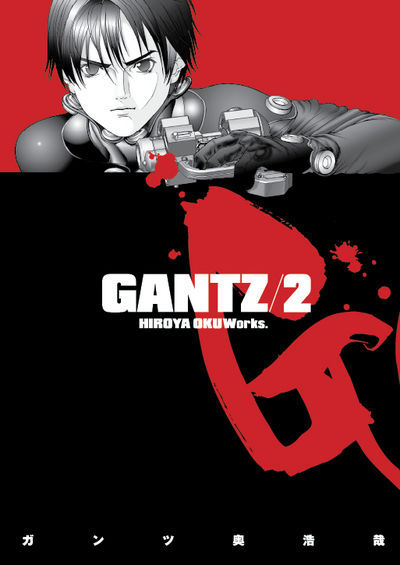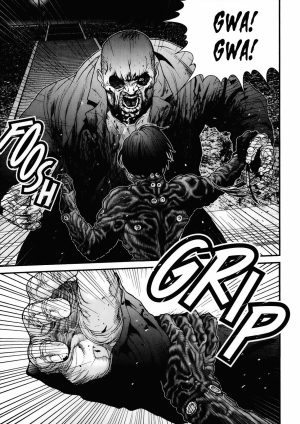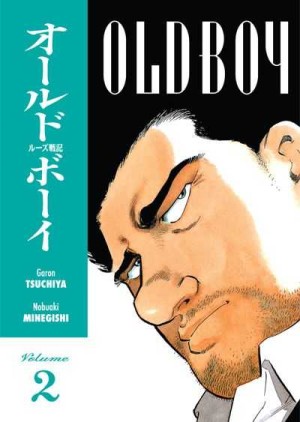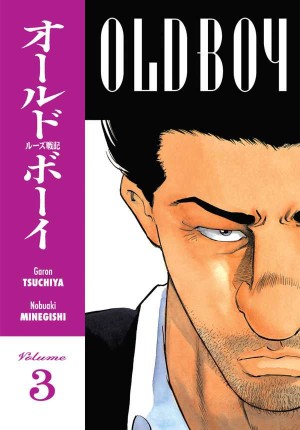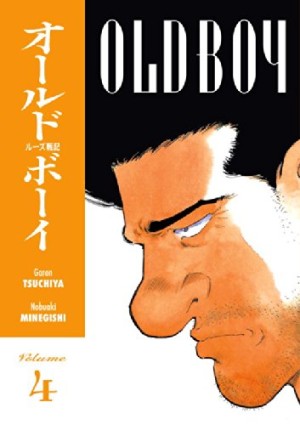Review by Frank Plowright
Kei and Kato hadn’t seen each other for a while, and if either imagined the circumstances of their reunion it wouldn’t have been getting killed in a Tokyo subway station, never mind manifesting in a room of other recently dead people. The particulars weren’t disclosed in Gantz 1, but everyone in the room was given a limited return to the real world to hunt down and kill an alien. Some bought into this grim scenario far more than others, and Gantz 1 ended with the appearance of a different alien, far bigger and very angry.
Having established his setting, Hiroya Oku spends much of Gantz 2 messing with perceptions, with readers placed in the position of the protagonists in not completely understanding what’s happening. One scene suggests what occurred in Gantz 1 was an elaborate TV production involving hypnotised people. The primary focus is on Kei, separated from everyone else he met in the room, and running for his life. He can see and hear other people, but to them he’s an invisible voice.
With the basis of Gantz so ethically unsound, Oku pushes his characters into corners, pressing buttons to reveal to readers how they’ll react. When encouraged will they happily kill, or are they better than that? Under different circumstances both Kei and Kato are put to the test.
Oku’s art is phenomenal over a decompressed storyline. Several chapters are allocated to a desperate chase and subsequent battle, and the alien’s design is complex, yet Oku draws the complexity again and again over dozens of pages.
A question carried over from the opening volume was the meaning of the title. It’s disclosed here, but be warned, it’s disappointingly random. Other information given out, though, is of greater importance. That is if the source is to be believed. They’re certainly confident and are proved right on a couple of matters despite an unlikeable smug attitude and certainly a callous one toward others.
This volume builds on the first, raising further questions and definitely ensuring anyone reading it will want to head for Gantz 3. Alternatively the first three volumes are combined in the first of Dark Horse’s pocket Omnibus editions.
